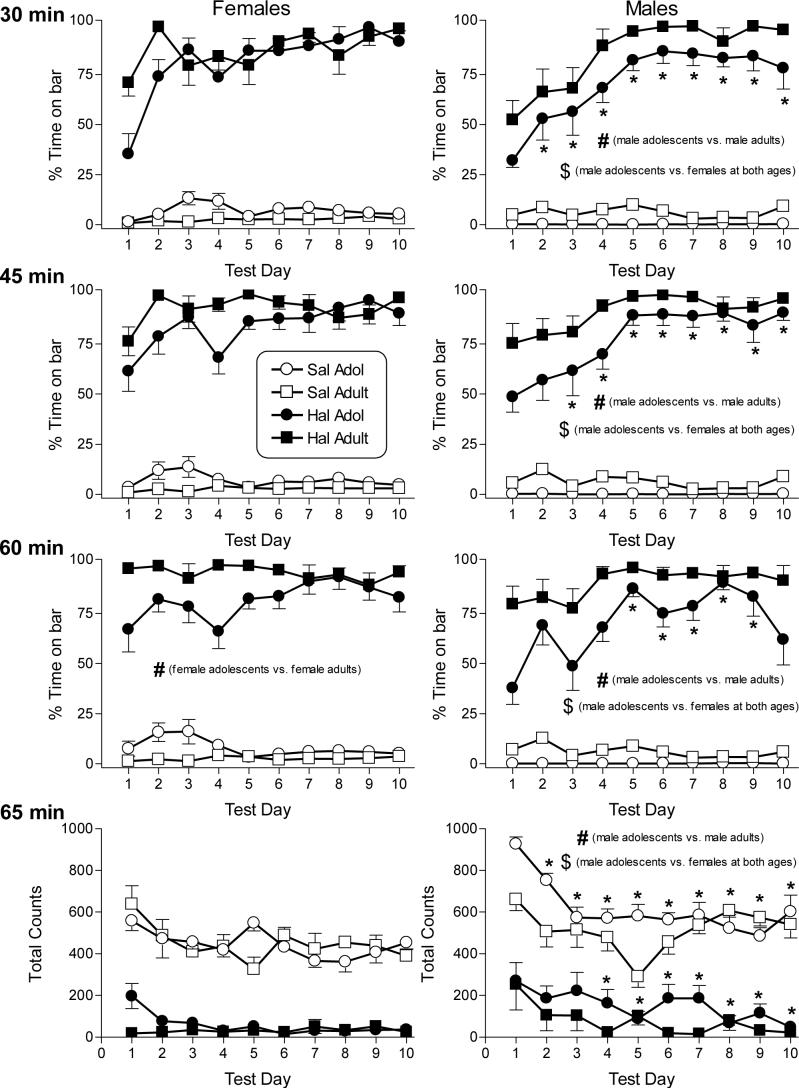Figure 1.
Effects of saline and haloperidol on catalepsy and locomotor activity in female and male adolescent and adult rats on 10 consecutive days. Catalepsy was assessed as percentage of time that the rat's forepaws remained in contact with a horizontal bar over each 5-min session. Three daily sessions were conducted 30 (1st row panels), 45 (2nd row panels), and 60 (3rd row panels) min after injection with saline (open symbols) or 0.3 mg/kg haloperidol (filled symbols). Haloperidol effects on locomotor activity, assessed as total number of photocell beam breaks during a 5-min session starting at 65 min following injection, are also shown (bottom panels). Each value represents the mean (± SEM) for 8−15 female adolescent and 9−10 female adult rats (left panels) and 11 male adolescent and 10 male adult rats (right panels). All indications of statistical significance are based upon results of Tukey post hoc analysis of significant interactions obtained in the overall 4-way (age X sex X dose X day) ANOVAs conducted on each of the four dependent measures. Haloperidol (0.3 mg/kg) produced significant catalepsy and decreased motor activity (as compared to saline) in rats of both sexes and ages on every day of the 10-day dosing regimen. # indicates significant difference between adolescent and adult rats of the same sex (age X sex interaction). $ indicates significant difference between rats of opposite sexes (age X sex interaction). * indicates significant difference from day 1 (dose X day interaction). All significance levels are reported at p<0.05.

